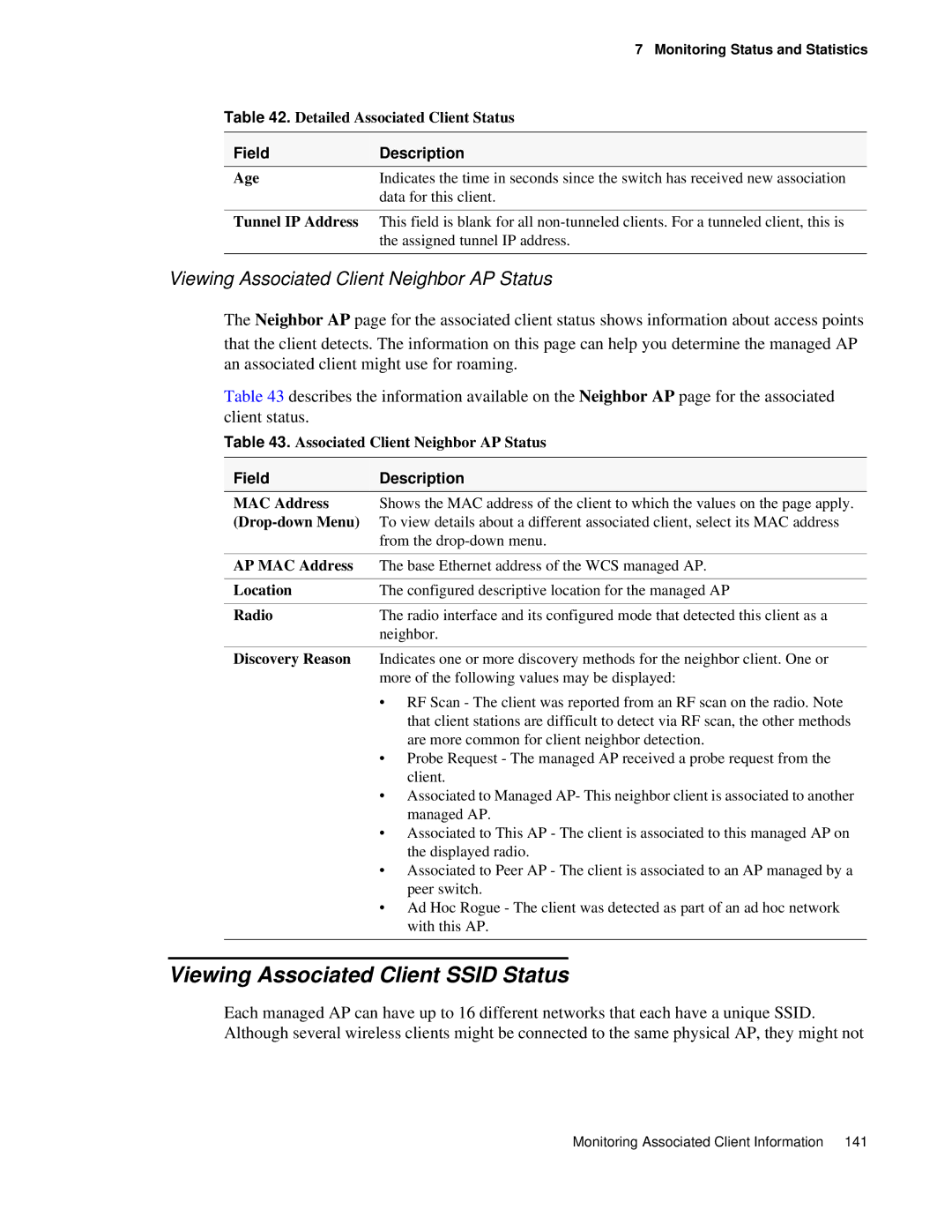
| 7 Monitoring Status and Statistics |
Table 42. Detailed Associated Client Status | |
|
|
Field | Description |
Age | Indicates the time in seconds since the switch has received new association |
| data for this client. |
Tunnel IP Address This field is blank for all
Viewing Associated Client Neighbor AP Status
The Neighbor AP page for the associated client status shows information about access points
that the client detects. The information on this page can help you determine the managed AP an associated client might use for roaming.
Table 43 describes the information available on the Neighbor AP page for the associated client status.
Table 43. Associated Client Neighbor AP Status
Field | Description |
MAC Address | Shows the MAC address of the client to which the values on the page apply. |
| To view details about a different associated client, select its MAC address |
| from the |
|
|
AP MAC Address | The base Ethernet address of the WCS managed AP. |
|
|
Location | The configured descriptive location for the managed AP |
|
|
Radio | The radio interface and its configured mode that detected this client as a |
| neighbor. |
|
|
Discovery Reason | Indicates one or more discovery methods for the neighbor client. One or |
| more of the following values may be displayed: |
| • RF Scan - The client was reported from an RF scan on the radio. Note |
| that client stations are difficult to detect via RF scan, the other methods |
| are more common for client neighbor detection. |
| • Probe Request - The managed AP received a probe request from the |
| client. |
| • Associated to Managed AP- This neighbor client is associated to another |
| managed AP. |
| • Associated to This AP - The client is associated to this managed AP on |
| the displayed radio. |
| • Associated to Peer AP - The client is associated to an AP managed by a |
| peer switch. |
| • Ad Hoc Rogue - The client was detected as part of an ad hoc network |
| with this AP. |
|
|
Viewing Associated Client SSID Status
Each managed AP can have up to 16 different networks that each have a unique SSID. Although several wireless clients might be connected to the same physical AP, they might not
Monitoring Associated Client Information | 141 |
